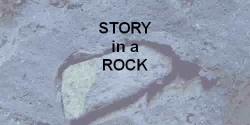What happens when fossils get cooked?
What happens when fossils get cooked?
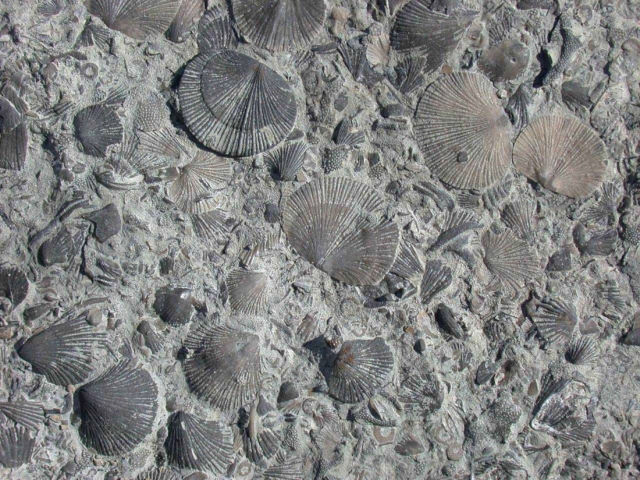 unaffected limestone with brachoipod shell
fossils
unaffected limestone with brachoipod shell
fossils
Let the rocks tell their story
Comments
on the in the cooking process...
see
also Metamorphic Rocks...
see
also Skarn Mineral Deposits...
Joint
Basics - a very general overview
The Story
The really cool bit in these images is seeing how the black igneous dolerite rock on the left cooks the fossils in the limestone on the right.
As you back away from the contact zone the ghost-like images of the original fossils are still visible in the marble rock. See the steps shown below
Chillagoe , Queensland Australiia has very interesting geology.
On what was once the edge of the continental shelf, fossil bearing limestones are intruded by granite and shot through with dolerite dykes.
Red hot dolerite moved into the limestone along joints (straight cracks) that formed when as the limestone was being formed it lost .
When something like rock shrinks you get two sets of straight joints .
Igneous rocks also get joints but for another reason. Liquid rock takes up more space than solid rock so as the rock turns solid it shrinks and voila! - two sets of joints form
You can also get joints by putting rock under tension that is pulling apart forces.
These hot igneous rocks cook the limestone and like a good cook, without melting the limestone transform it into clean beautiful marble.
The marble is mined as decorative stone.
The cooked contacts of the igneous and sedimentary rocks form calcsilicate rich mineral skarn mineral deposits and are mined for copper and gold
Comments on the in the cooking process:
Comment #1 Cooking
The red hot black igneous rock dolerite (left) intrudes along a joint into the white and grey sedimentary fossil bearing limestone (right)
The greenish band on the contact is newly created calcsilicate minerals which form the basis for skarn type mineral deposits
The process is called "contact metamorphism"
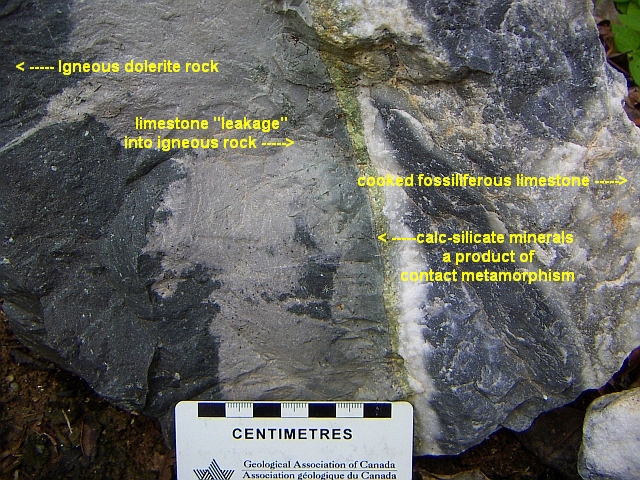
Comment#2 Transformation
The fossils, still visible below are transformed, without melting, from limestone to marble
The resultant marble has larger crystals, is denser and has fewer impurities than the original limestone.
The fossils gradually "ghost" and "fade" into the marble as the crystal growth obscures and overgrows their edges.
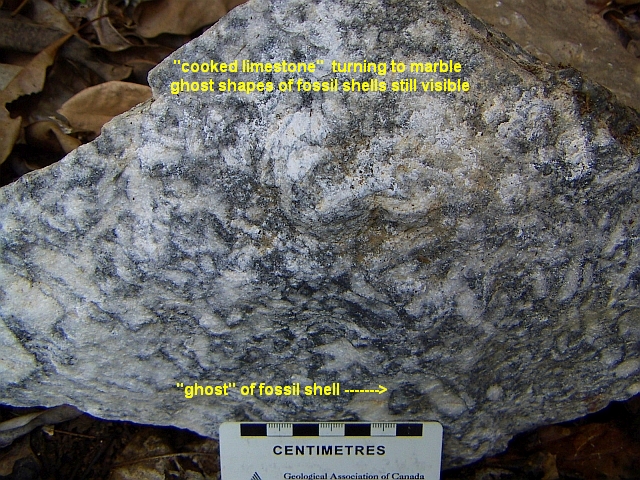
Comment #3 The Full Sequence from right to left...
- the unaffectedv fossiliferous limestone
- heat from dolerite cooks the fossils transformng them into marble
- gradually fossils are gradually disappearing into coarser marble,
- on the contact, green calcsilicates are newly formed
- some of the calcium from the limestone contaminates the contact margin of the dolerite
- the dyke of unaffected black igneous dolerite
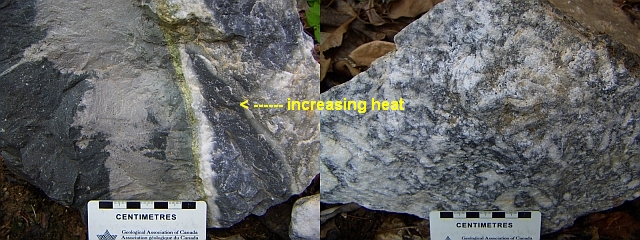
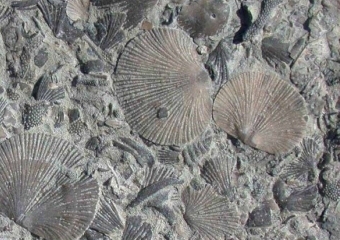
Comment #4 Contact Metamorphism
In contact metamorphism the heat and pressure of a nearby intrusion "cooks" the adjacent rocks transforming it into a metamorphic rock.
Metamorphic rocks tend to be more dense and have coarser crystals than their origin rocks.
The process of contact metamorphism on the "dirty" fossil bearing limestones of the Chillagoe area transforms the limestone into clean massive marble and creates concentrations of copper and gold along the contact skarns.
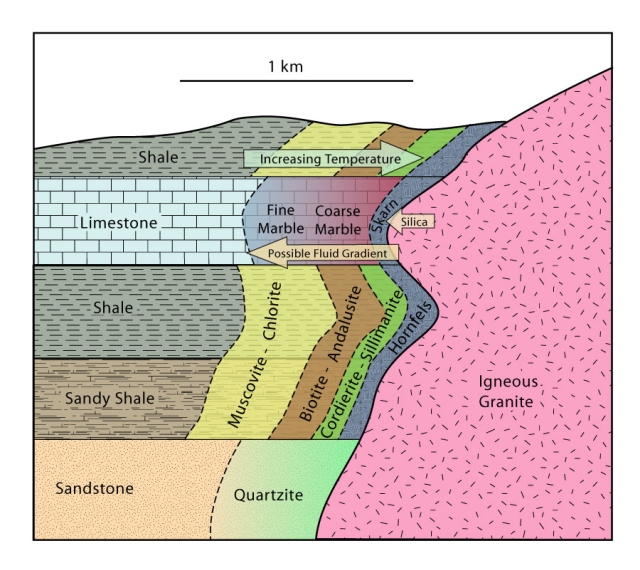
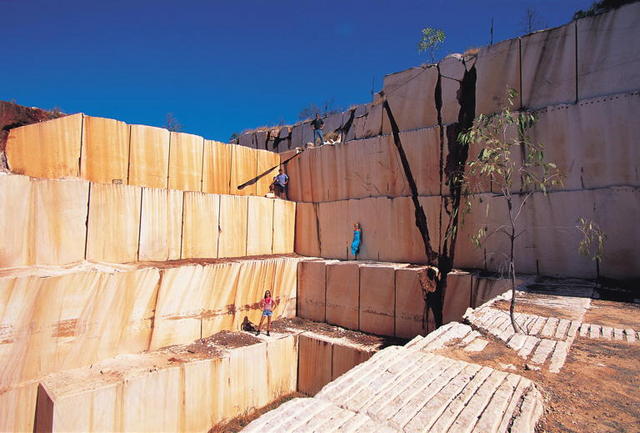
Chillagoe marble quarry
Joint Basics - a very general overview...
- Joints (also termed extensional fractures ) are planes of separation on which no shear displacement has taken place.
- The two walls of the resulting opening typically remain in tight (matching) contact.
- Joints may result from
- regional tectonics (i.e. the compressive stresses in front of a mountain belt),
- folding (due to curvature of bedding),
- faulting,
- or internal stress release during uplift
- or cooling (ie shrinkage)
- They often form under high fluid pressure (i.e. low effective stress), perpendicular to the smallest principal stress.
- so in sedimentary beds they generally form perpendicular to the bedding.
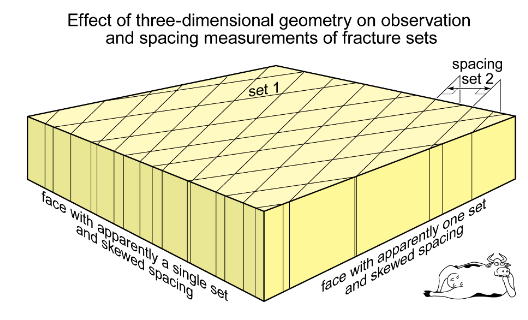 Two
sets regularly spaced of joints are formed but their spacing is
offset (skewed) in sectional view
Two
sets regularly spaced of joints are formed but their spacing is
offset (skewed) in sectional viewJoints are ubiquitous features of rock exposures and often form families of straight to curviplanar fractures typically perpendicular to the layer boundaries in sedimentary r ocks. A set is a group of joints with similar orientation and morphology. Several sets usually occur at the same place with no apparent interaction, giving exposures a blocky or fragmented appearance. Two or more sets of joints present together in an expos ure compose a joint system . Joint sets in systems commonly intersect at constant dihedral angles. They are conjugate for dihedral angles from 30 to 60°, orthogonal when the dihedral angle is nearly 90°

- the thinner the bed the more joints,
- the stiffer the bed the more joints
source: https://lifeinplanelight.wordpress.com/tag/metamorphism/
http://www.files.ethz.ch/structuralgeology/JPB/files/English/4joints.pdf
from the collection of Earth Science Australia

